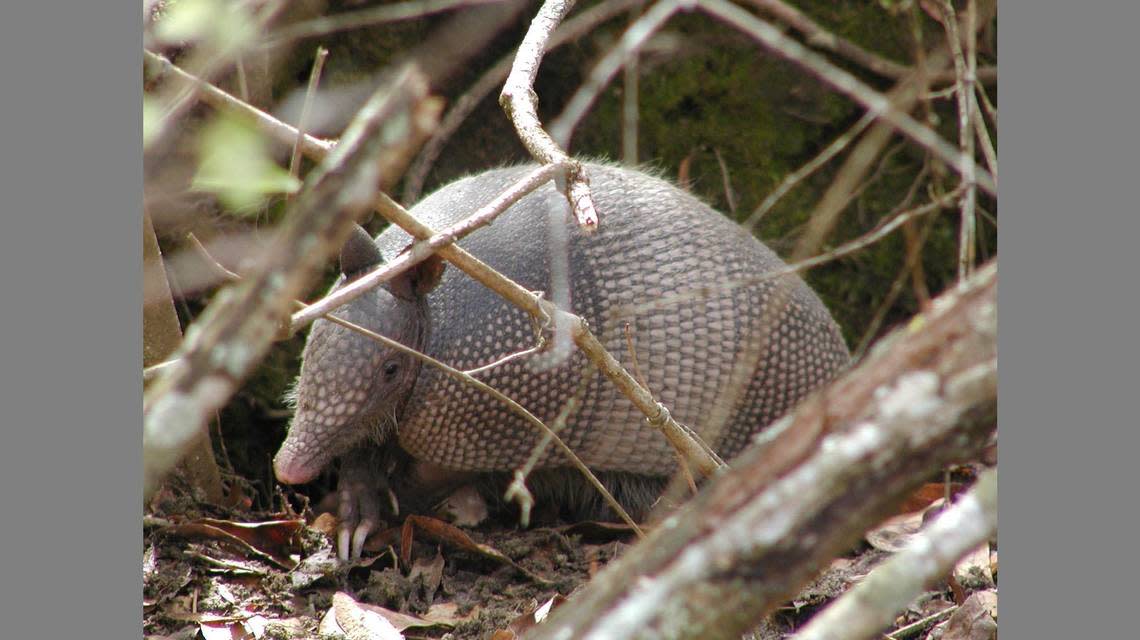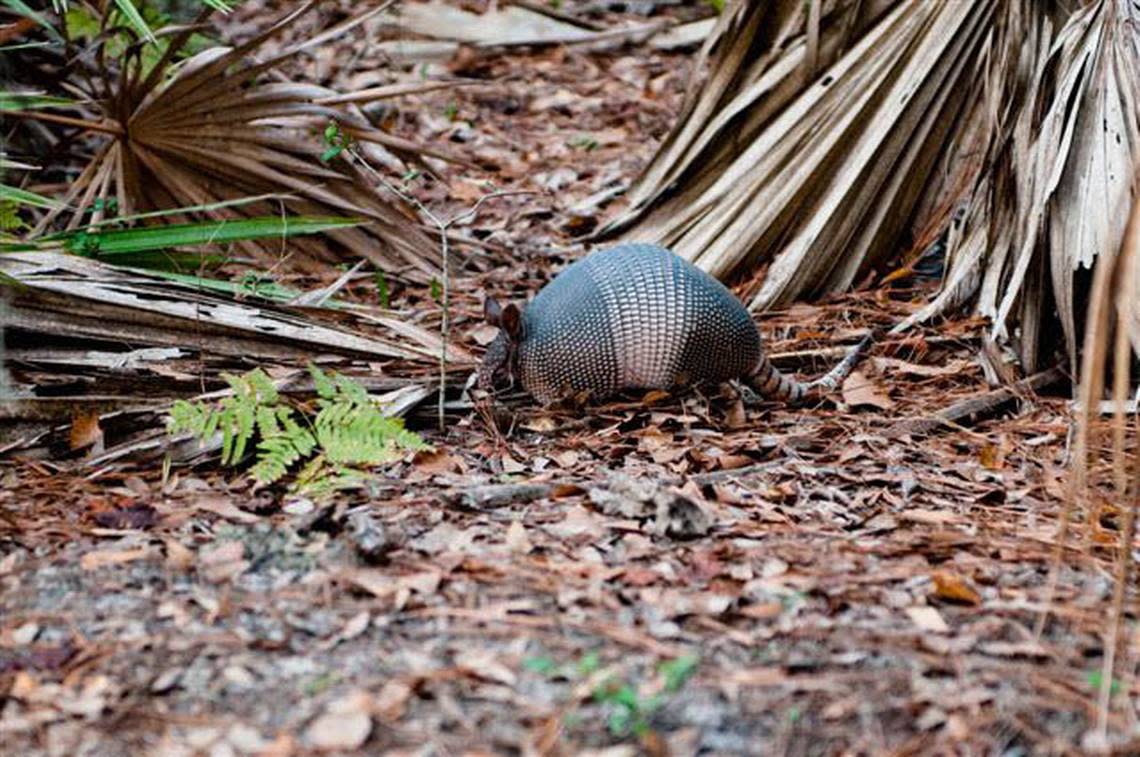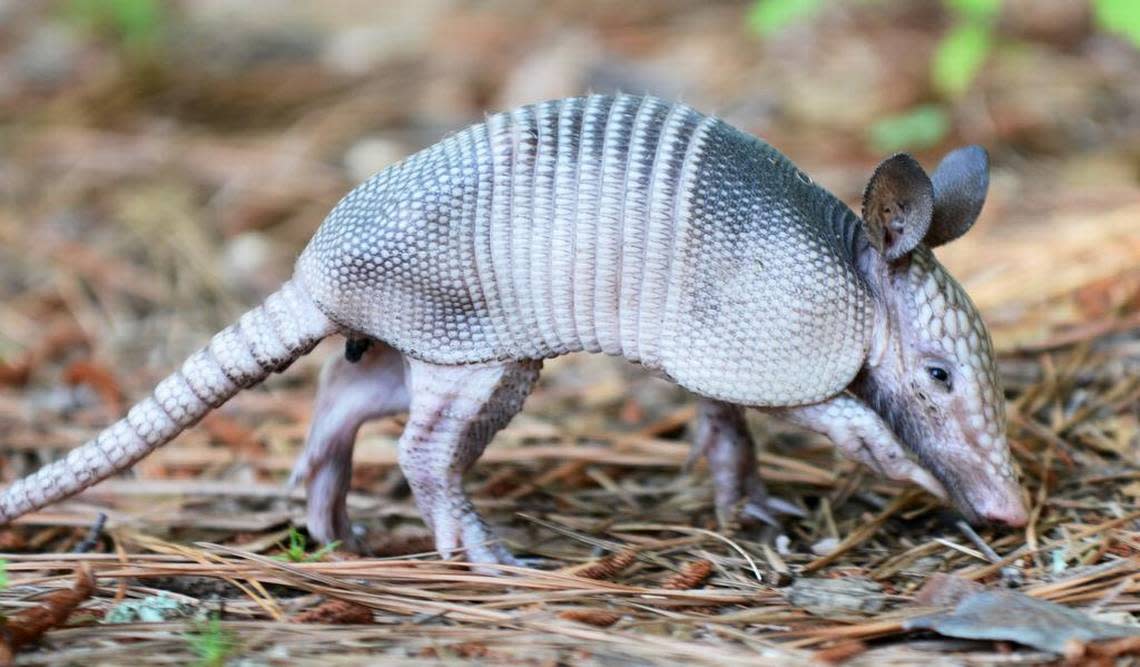Keep annoying SC armadillos from destroying your lawn at night with these tips
Have you ever walked through your yard or somewhere in South Carolina and heard a strange rustling sound in a nearby bush?
While walking along more remote or densely forested nature preserves, this sound can be quite common.
But, what is making all that noise?
Hard-shelled critters called armadillos are most-likely the cause.

In South Carolina and many other southern states, it’s not unusual to pass by a dead armadillo along the highway or to spot a live one digging through underbrush or crossing streets within a local neighborhood.
Armadillos will spend their days digging in the dirt or through your yard for worms and bugs they can continuously snack on.
In many residential neighborhood areas throughout the Palmetto State, these roly poly lookalikes are widely considered a nuisance. This is due to their incessant digging habits, which can leave lawns littered with holes and overturned objects in your yard as well as tunneling graveyards in lawns and underneath homes.
These critters love to burrow and can easily leave your yard a lumpy mess with no stone left unturned. Aside from ruining the overall appearance of your lawn, they can cause underground damage to items such as cables, pipes and the overall structural foundation of your home.

Because of this, many homeowners opt to take precautions to prevent armadillos from getting into their yards.
In-ground fencing, eliminating hiding spaces in your yard such as brush, tall grasses and piled pine straw, reducing the availability of nearby bugs and food sources and placing ammonia or vinegar throughout your property are all effective ways to prevent armadillos from digging up your lawn.
Armadillos’ ideal diet can consist of termites, grubs and other insects as well as fruits and veggies. By minimizing their food sources and eliminating a point of interest, these critters are much less likely to enter your yard.

Some beliefs also include that pine cones or the smell of Pine Sol may even ward these critters off.
Are you looking for professional help to prevent them from invading your land and digging up everything in sight? Critter Control released five ways you can protect your yard from armadillos. These include:
Get a fence. If you don’t want a tall fence obstructing your views, don’t worry. You can install a short, strong fence that is deep into the ground surrounding your yard. The reason the fence doesn’t need to be tall is because armadillos cannot jump very high. The deepness of the fence will prevent the animal from burrowing under it and through to your yard.
Make your yard intentionally inhospitable for armadillos. To do this, Critter Control recommends that you place wood chips in your yard, especially around your flower beds, to make it difficult for armadillos to burrow through.
Rid your yard of small insects. Armadillos like to burrow through loose soil and under shrubbery looking for grubs and insects. Treat your lawn with bug sprays or insecticides to take away any food source or attraction to your soil.
Add scented deterrents around your property. Armadillos do not like spicy scents. Try to add a little sprinkle of cayenne pepper around your yard to create your own “armadillo deterrent.”
Set traps around your lawn. Setting armadillo traps either on top of their burrows or at strategic points around your yard will allow you to catch the critter. However, it’s important to remember that handling them without proper tools, caution and equipment can be dangerous. In addition, it is illegal to transport and release armadillos to a new location, according to SCDNR. If trapped, they must be dispatched on-site by either yourself or a professional.
Can armadillos be dangerous?
Although they appear harmless and they mostly are, these critters can be more dangerous than just causing a hole-riddled yard.
Armadillos could easily get frightened by your presence and may attack you if they felt threatened.
“If bitten or scratched by an armadillo, you could be at risk of contracting diseases like leprosy or rabies,” reported Critter Control.
This is why it is generally safer to call a local professional when dealing with an armadillo that happened to stumble upon your property. They can help you prevent more unwelcome visits and remove the unwanted guests safely and efficiently. This will help keep you safe as well as preserve the structural integrity of your home.
Leprosy, also called Hansen’s disease, is the biggest fear many have about being around an armadillo.
Although this transmission is possible, it’s less likely than you may have heard.
“In the southern United States, some armadillos are naturally infected with the bacteria that cause Hansen’s disease in people and it may be possible that they can spread it to people. However, the risk is very low and most people who come into contact with armadillos are unlikely to get Hansen’s disease,” detailed the Centers for Disease Control and Prevention.
For general health reasons, it’s recommended to avoid contact with armadillos whenever possible, the CDC continued. If you have had contact with one of these hard-shelled critters and are worried about getting Hansen’s disease, it’s advised to speak with your healthcare provider.
Now, if you see them while out-and-about, it’s safe to observe them from a distance. If you stay still and quiet, they are likely to continue on with their day unbothered and unfrightened.
